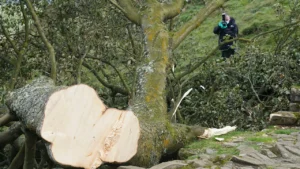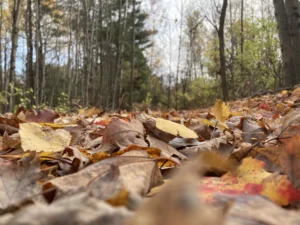California Tree Removal Laws: A Comprehensive Guide (2024 Update)
California is known for its majestic landscapes and diverse range of trees, from the iconic redwoods to the urban trees lining city streets. However, when it comes to removing trees from private or public property, the state has a set of comprehensive laws that regulate how, when, and why trees can be removed. Understanding these laws is crucial for property owners, developers, and communities, as failure to comply with tree removal regulations can result in fines and other legal complications. This guide covers all aspects of California tree removal laws, including state-wide regulations, city-specific ordinances, requirements for residential and commercial properties, protected tree species, and application processes.
Overview of California Tree Removal Laws
California’s tree removal laws involve a combination of state statutes and local city ordinances. While each municipality has its own specific regulations, statewide laws address conservation, environmental protection, and specific protections for certain species of trees.
Key Aspects of California Tree Removal Laws
- State Regulations: State laws provide protections for trees of specific species, certain sizes, or in specific locations, such as along highways or in heritage areas. These laws often set a baseline for conservation efforts and are sometimes supplemented by stricter local ordinances.
- Local Ordinances and Urban Forestry Programs: Each city or county may enforce its own rules and guidelines about tree removal, pruning, or replanting to maintain urban forestry and protect significant trees.
- Residential vs. Commercial Rules: Different laws apply to residential and commercial properties, with more stringent requirements often placed on commercial properties and developers.
Understanding the interplay between these state and local laws is essential for property owners considering tree removal.
Statewide Tree Removal Laws in California
California does not have a single overarching law that regulates tree removal across all properties, but there are some key statewide regulations that must be followed.
Heritage and Landmark Trees
Many trees in California are designated as heritage or landmark trees due to their age, size, historical significance, or ecological importance. Removal of these trees requires special permits and justification, with significant requirements for replacement or mitigation.
- Criteria for Heritage Trees: Typically, heritage trees are those over a certain diameter, ranging from 24 to 36 inches in diameter at breast height (DBH), depending on local ordinances.
- Species-Specific Protections: In some areas, specific species such as California oak trees are protected regardless of their size.
California Environmental Quality Act (CEQA)
The California Environmental Quality Act (CEQA) mandates that environmental considerations, including tree removal, must be part of the planning and permitting process for development projects. Under CEQA, any project that could potentially impact trees may require an environmental review.
- Environmental Review: CEQA requires consideration of the effects on trees as part of an Environmental Impact Report (EIR). If significant trees are to be removed, the developer may be required to outline mitigation measures, including tree replacement.
Utility Line Clearance
Under California Public Resources Code Section 4293, utility companies are required to maintain clearance around power lines to prevent fire hazards. This law allows utility companies to trim or remove trees without prior notice if they are within specified distances of power lines.
- Minimum Clearances: These clearances range from 4 to 10 feet around power lines, depending on the voltage and local fire hazard zone.
City-Specific Tree Removal Ordinances in California
In addition to state laws, California cities and counties have their own tree ordinances that govern tree removal. These local ordinances vary widely, so it is essential to check the specific regulations in your municipality before removing any tree.
Example of Local Ordinances
| City/County | Residential Permit Requirements | Commercial Permit Requirements | Protected Species and Requirements |
|---|---|---|---|
| Los Angeles | Permit required for native oaks and significant trees | Permit needed for all significant removals | Native oaks, walnut, sycamore trees have special protections |
| San Francisco | Permit required for trees over 20 feet or 15 inches DBH | Requires a Tree Removal Plan | All “significant” and “landmark” trees need permits |
| San Diego | Permit needed for coastal and heritage trees | Comprehensive tree removal and replacement plan | Coastal trees and heritage trees are protected |
| San Jose | Permit needed for trees 56 inches circumference or more | Detailed site and replanting plan required | Oaks and heritage trees require city approval |
| Sacramento | Permit needed for trees over 12 inches DBH | Removal plan and replacement trees required | Native oaks have special protection |
Each city uses specific criteria to define “significant,” “heritage,” or “protected” trees, often based on the tree’s species, size, age, and ecological importance.
Tree Removal Regulations by Property Type
Residential Property Tree Removal Regulations
In California, residential properties are subject to various tree removal regulations depending on the local ordinances. The general process includes:
- Tree Protection Laws: In many cities, if a tree exceeds a certain size or is of a specific species (e.g., native oak trees), a permit is required for its removal.
- Application Process: Property owners usually need to apply for a permit from their local city arborist or planning department. This often involves submitting an application detailing the tree’s size, species, location, and the reason for removal.
- Fees and Replacement Requirements: In some cities, property owners must pay permit fees or agree to replace the removed tree with one or more new trees of a similar species.
For example:
- San Francisco: Trees with a height of over 20 feet or a DBH of over 15 inches are classified as “significant” and require a permit to remove. A replacement tree is often required to maintain the urban canopy.
Commercial Property Tree Removal Regulations
For commercial properties, tree removal is often more heavily regulated to preserve the tree canopy and mitigate environmental impacts. Commercial property owners must typically follow these steps:
- Comprehensive Site Plans: A detailed tree survey and site plan showing the number, size, and species of all trees on the property are often required.
- Permit and Approval Process: In most cases, commercial tree removal applications are reviewed by the city’s planning department, urban forestry division, or an environmental board.
- Mitigation Measures: In addition to paying permit fees, commercial properties often need to meet stringent replanting requirements or pay into a tree mitigation fund to offset the environmental loss.
For example:
- San Diego: Commercial property owners seeking to remove a tree are often required to submit a comprehensive Tree Removal Plan, which must be reviewed and approved by the city, with emphasis on replanting and preserving the city’s coastal heritage trees.
Protected Trees and Species in California
Certain trees in California are designated as protected species due to their ecological, historical, or cultural significance. These trees often require special permits for removal and have strict replanting or mitigation requirements.
Commonly Protected Trees in California
| Tree Species | Protection Status/Requirements |
|---|---|
| Coast Live Oak (Quercus agrifolia) | Strongly protected throughout California; permits needed |
| Valley Oak (Quercus lobata) | Heritage status in many regions, requires permit |
| California Sycamore (Platanus racemosa) | Protected as native species; permits and replacements required |
| Monterey Pine (Pinus radiata) | Protected in some coastal zones; restrictions on removal |
| California Redwood (Sequoia sempervirens) | Limited removal in heritage and conservation areas |
Identifying Protected Trees
Before planning any tree removal, property owners should:
- Check Local Tree Ordinances: City or county regulations often provide lists of protected tree species and the permit process required for removal.
- Consult an Arborist: A certified arborist can identify the species of the tree, its health status, and guide you through the necessary steps for legal removal.
Application Process for Tree Removal Permits
Application Steps for Residential and Commercial Properties
To apply for a tree removal permit in California, the following general steps should be followed:
- Consult Local Ordinances: Check the specific regulations in your city or county to determine if a permit is required.
- Hire a Certified Arborist: If necessary, hire an arborist to evaluate the tree’s health and determine if it qualifies for removal.
- Submit Permit Application: Obtain the correct permit application from your local government’s planning department, urban forestry division, or environmental board.
- Provide Required Documents: Submit a site plan or tree survey, photographs, and any necessary documentation, including the arborist’s evaluation.
- Pay Permit Fees: Permit fees vary by city and are based on tree size, type, and the reason for removal.
Tree Removal Application Fees
| City/County | Residential Permit Fees | Commercial Permit Fees |
|---|---|---|
| Los Angeles | $150 – $300 | $500+ |
| San Francisco | $100 – $500 | Varies based on project size |
| San Jose | $100 – $200 | $500+ |
| Sacramento | $50 – $150 | $250+ |
Penalties for Illegal Tree Removal
Removing a tree without the proper permit or
violating local ordinances can result in severe consequences:
- Fines: Penalties can range from $500 to over $10,000 per tree, depending on the species and the city’s regulations.
- Restitution and Replacement: Property owners may be required to replant multiple trees or pay a mitigation fee, sometimes exceeding $50,000 for significant heritage trees.
- Legal Action: Illegal removal of trees, particularly protected species, can lead to civil penalties and court action.
For example:
- Los Angeles: The unauthorized removal of a native oak tree can result in fines of up to $5,000 per tree, along with requirements to replant several replacement trees.
Resources for Property Owners and Developers
- California Department of Forestry and Fire Protection (CAL FIRE): For statewide tree removal guidance – CAL FIRE Website
- Local Urban Forestry or Planning Department: Check your local city’s website for tree ordinance information, permit applications, and guidance on removal.
- ISA Certified Arborists: To find a certified arborist who can help with evaluation and permit application – ISA Arborist Finder
Conclusion
California’s tree removal laws are designed to protect the environment while balancing the needs of property owners. Understanding both state and local regulations is essential to ensure compliance and prevent penalties. Whether you’re a homeowner, a commercial property owner, or a developer, always consult with your local ordinances and, if necessary, hire a certified arborist to navigate the permitting process properly. Following the law ensures that California’s urban forests remain healthy, sustainable, and vibrant for future generations.


